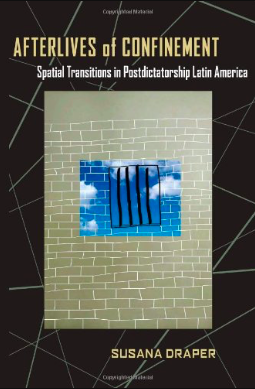Segunda parte (final)
Luego de que la amiga de Gaspar, Adela, sea atrapada por la casa abandonada que ella y sus amigos visitaron al final de la tercera parte, el grupo de amigos se desintegra. Las páginas restantes de Nuestra parte de noche (2019) dan seguimiento a estos eventos. A su vez, el resto de la novela se compone de fragmentos del diario de la madre de Gaspar, Rosario (“Círculos de tiza”); las notas de una periodista que investiga las fosas de restos humanos y desaparecidos de la dictadura (“El pozo de Zañartú”); y la última parte de la novela sigue los años de Gaspar con Luis, su tío, hasta el desenlace de la historia, cuando Gaspar se venga de “La Orden” (“Las flores negras que crecen en el cielo”). Como ya era claro al final de la tercera parte, una de las preocupaciones principales de Nuestra parte de noche es el pensar la post-dictadura argentina, la transición a la democracia.
La novela de Enríquez invita a pensar en la transición como un proceso de intercambio. Juan engaña a “La Orden,” bloquea los poderes de Gaspar, pero para poder salvar a Gaspar, debe de entregarle Adela a “La Oscuridad.” La amiga de Gaspar, resulta ser su prima, su madre era prima de Rosario. Adela es la hija de una Bradford y un militante del “Ejército de Liberación Maoísta Leninista” (501). Desde esta perspectiva, la novela sugiere que para poder salvar los restos del peronismo (el hijo de Juan, Gaspar), se debe entregar a la “Oscuridad” los restos de la izquierda radical. Desde esta perspectiva, la transición a la democracia argentina es la traición a la izquierda radical. La cuestión, entonces, es si el peronismo puede vivir con esta traición. Por el final de la novela, la respuesta es una rotunda negación. Luis, el tío de Gaspar, intenta reconstruir su vida, y la casa donde se muda con su sobrino “una casa en Villa Elisa, cerca de La Plata, que se venía abajo, pero era hermosa y Luis quería recuperarla” (519). Luis, como un restaurador, intenta reconstruir los restos del peronismo, incluso llama a uno de sus hijos como Perón. Sin embargo, sus esfuerzos son en vano: Luis es asesinado por la abuela de Gaspar para atraer a su nieto de nuevo a la “La Orden” y retomar las tareas pendientes de su padre.
Si bien, la novela invita a pensar en el rol de las élites en el proceso de transición, sobre todo por los personajes de la familia Bradford “los reyes. Terratenientes. Yerbateros. Rentistas. Explotadores” (591). La novela también invita a pensar en el desgaste de la clase letrada, o más bien, en el desgaste de la profesionalización laboral y artística, y el desgaste de la vida en general. La madre de Gaspar, “la primera doctora en antropología argentina graduada en Cambridge” que sentía “un orgullo ridículo” (445), contrasta radicalmente con los sentimientos de Gaspar y sus amigos frente a sus vidas y profesiones. Gaspar, por ejemplo, filmaba fiestas de quinceañeras, lo “hacía por hacer algo, para no aburrirse” (592). Y más aún, a pesar de ser un joven brillante, atractivo y millonario, es incapaz de compartir su riqueza, incluso después de vengarse de “La Orden.” Él mismo comenta “No entiendo por qué tengo que estudiar” (617), ante las insistencias de su novia Marita para que se vuelva profesor de inglés. Igualmente, los dos amigos de Gaspar, Vicky y Pablo tampoco encuentran ese orgullo que sentía la madre de Gaspar. Vicky es una doctora con una habilidad de diagnóstico infalible, pero incapaz de sentir empatía, “esa parte de la medicina, la empatía, no la tenía tan desarrollada … Le costaba ver a la gente detrás de las patologías …Ella debía ser eficiente y certera para curar. Que otro se encargara de secar las lágrimas y calmar el pánico: ella estaba demasiado ocupada” (582). Pablo, a su vez, vive con la imposibilidad de volver público su romance con un fotógrafo de éxito, a pesar de que en su círculo de artistas, la homosexualidad no es tabú. La transición, entonces, dejó las cosas sumergidas en un miasma. A cambio de eficacia laboral (Vicky); riqueza, no bien distribuida, (Gaspar); y éxito en las artes (Pablo) se sacrificó el amor, el orgullo “ridículo,” la pasión y el deseo del estudio. Los personajes de Nuestra parte de noche viven todos como Gaspar al final de la novela con “un corazón exhausto” (667).


